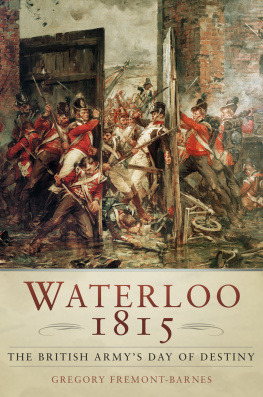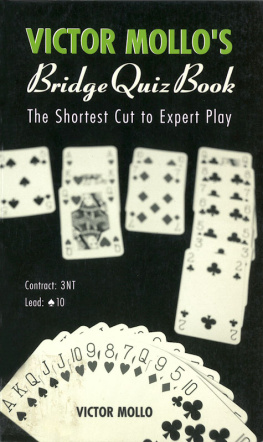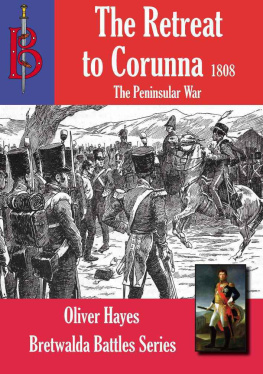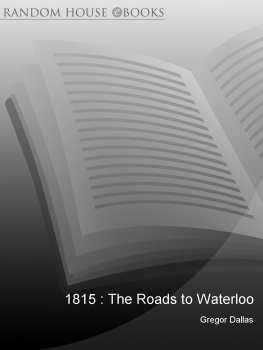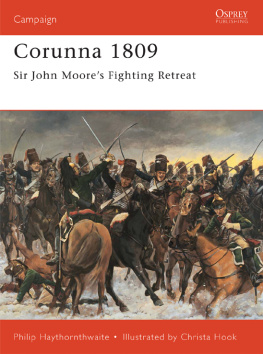


IN MEMORY OF C.C.P.L. (R. 1892)
Author, artist and Carthusian
I think the Prince [Regent Colonel of the 10th Hussars] will be highly delighted that his Dolls were the only ones kept engaged on that day, [at Morales] and came off so brilliantly
(JSAR Vol 44 p.101)
First published in Great Britain in 1997
Republished by
PEN AND SWORD MILITARY
an imprint of
Pen and Sword Books Ltd
47 Church Street, Barnsley
South Yorkshire S70 2AS
Copyright John Mollo, 2013
ISBN 978 1 78346 239 1
eISBN 9781473831520
The right of John Mollo to be identified as the author of this work has been asserted by him in accordance with the Copyright, Designs and Patents Act 1988.
A CIP record for this book is available from the British Library.
All rights reserved. No part of this book may be reproduced or transmitted in any form or by any means, electronic or mechanical including photocopying, recording or by any information storage and retrieval system, without permission from the Publisher in writing.
Printed and bound in England by
CPI Group (UK) Ltd, Croydon, CR0 4YY
Pen & Sword Books Ltd incorporates the imprints of Pen & Sword Books Ltd incorporates the imprints of Pen & Sword Archaeology, Atlas, Aviation, Battleground, Discovery, Family History, History, Maritime, Military, Naval, Politics, Railways, Select, Social History, Transport, True Crime, and Claymore Press, Frontline Books, Leo Cooper, Praetorian Press, Remember When, Seaforth Publishing and Wharncliffe.
For a complete list of Pen and Sword titles please contact
Pen and Sword Books Limited
47 Church Street, Barnsley, South Yorkshire, S70 2AS, England
E-mail: enquiries@pen-and-sword.co.uk
Website: www.pen-and-sword.co.uk
Contents
Maps
Spain and Portugal, 180814
The Unfavourable Retreat, 18089
From Lisbon to the Duoro, 1813
From Valladolid to Toulouse, 181314
The Approach to the Pyrenees, 181314
Acknowledgements
This account of the beginnings of the Hussar regiments of the British army originated in research carried out in the early sixties for the planned sixth volume of the late C.C.P. Lawsons History of the Uniforms of the British Army , and it is to him that I have dedicated it, in commemoration of nearly twenty years of friendship and collaboration. The bulk of the work was completed in the early 1970s, and consequently many of the people and institutions from whom I then received so much help are no longer with us. From the first I have had ready and comprehensive answers to my numerous questions from the Marquess of Anglesey and Mr S.P.G. Ward and general encouragement from Michael Barthorp and my brother, Boris, who read the original draft and made many useful suggestions for its improvement. The Army Museums Ogibly Trust, under its successive secretaries, has been a treasure house of information, particularly of a pictorial nature, as have the libraries of the Royal United Services Institution, the British Museum and the War Office, now Ministry of Defence. The late Mrs John Nicholas Brown allowed unrestricted access to her incomparable collection of military drawings and prints, a tradition which has, since her death, been carried on by its present curator, Peter Harrington.
Many people responded generously to my requests to examine family papers and diaries. In the early days Mr. Robert Mackworth-Young, the Royal Librarian, and Miss Jennifer Sharwood, Curator of Prints and Drawings, Royal Collection, patiently answered my numerous queries. The Duchess of Beaufort allowed me to examine the Badminton papers with the assistance of Mr. S. Bywater. Lt.-Colonel C.T. Mitford-Slade and the Somerset Record Office made notable efforts to find the missing diary of Sir John Slade and Mr F.R. Hodge and Major J.S. Sutherland allowed me to make transcripts of the invaluable Hodge papers lodged in the Queens Own Hussars Museum. Major Simon Murray of the 15th/19th Hussars allowed me to examine the Adjutants diaries, now in their regimental museum in Newcastle-on-Tyne. The Hon. J. Wyndham, Miss D. Beatrice Harris and Miss Gordon Williams gave me much information on the Wyndham family and took time and trouble to guide me to the West Sussex Record Office. The University College of North Wales provided copies of the Hughes diary and the Department of Manuscripts, Nottingham University, copies of the letters of Captain Mellish. More recently I am indebted to Colonel Robin Merton for permission to examine the archives of the 10th Hussars and through the years the London Library and its helpful staff have been of great assistance.
Last, but not least, my thanks go to my wife, Louise, who has lived with this project for much of our married life and who has patiently tramped across many apparently featureless stretches of foreign soil in the firm belief that they meant something special to me, and finally to our son, Thomas, a baby when I started writing this book and who, now that it is finished, is himself a serving officer.
Hungerford, 1997
CHAPTER ONE
The Colonel of Dragoons
At half-past five on the morning of Monday, 25 February, 1793, Sir Gilbert Elliot was up and about to see the three battalions of the Foot Guards march off from Horse Guards en route for Greenwich, and thence to Holland. The 2,000 men drawn up on parade, all young and all fine, were, he wrote, animated by a spirit natural on the occasion, not to mention spirits of a different sort, of which they had had more than one could wish. Many of them were too drunk to walk straight. As the grenadier companies moved off the men burst into God Save The King!, which moved the Monarch a good deal. He was riding a white charger and looked like an equestrian statue. The thirty-one-year-old Prince of Wales was also present, wearing his new Light Horse uniform, which was very handsome and theatrical, but displayed an amount of bulk, which certainly amused Sir Gilbert and his companion, and probably all beholders.
The crisis which had led to the departure of the Foot Guards had been brought to a head by the French invasion of the Austrian Netherlands. On 21 January, 1793, Louis XVI had been sent to the guillotine and the following month the French Republic, already at war with Austria and Prussia, declared war on Britain. Austria was unwilling to commit the bulk of her army to the defence of the Low Countries, so a coalition of Austrian, British, Hanoverian and Prussian troops was hastily assembled for the purpose. The available British troops, consisting of two infantry brigades and twenty squadrons of cavalry, were rushed to Holland, under the command of the Kings second son, the Duke of York.
In order to account for the presence of the Prince of Wales, in full uniform, that cold February morning, and his subsequent involvement in the affairs of the British Army, it is necessary to go back thirteen years, to the time of his coming of age. Prince George and his next younger brother, Prince Frederick, later to become Duke of York, with only a year and four days separating them, were very close and had been educated together from an early age. Their first tutor, the Earl of Holdernesse, gave them a rigorous grounding in the Classics, but was afterwards driven to comment that, while the Royal brothers could be taught Latin and Greek with ease, they could never be taught to understand the value of money. Both Princes inherited the strong military traditions of the House of Brunswick, which were, at first, encouraged. At the age of five Prince George was felt to be too timid, so he was given a battery of twenty-one one-pounder brass guns, complete with travelling carriages, on his birthday, in order to correct this tendency. Later, however, the King began to discourage the military sciences in his eldest son, while fostering them in Prince Frederick. The latter was taken by his father to numerous reviews and was placed in the charge of General Smith, an engineer, under whose guidance he studied all the best foreign military writers. In the process the gardens of Kew House were transformed into the terrain of the Seven Years War, where the battles of Fredericks great namesake were refought over again. Clearly much of this rubbed off onto his elder brother.





